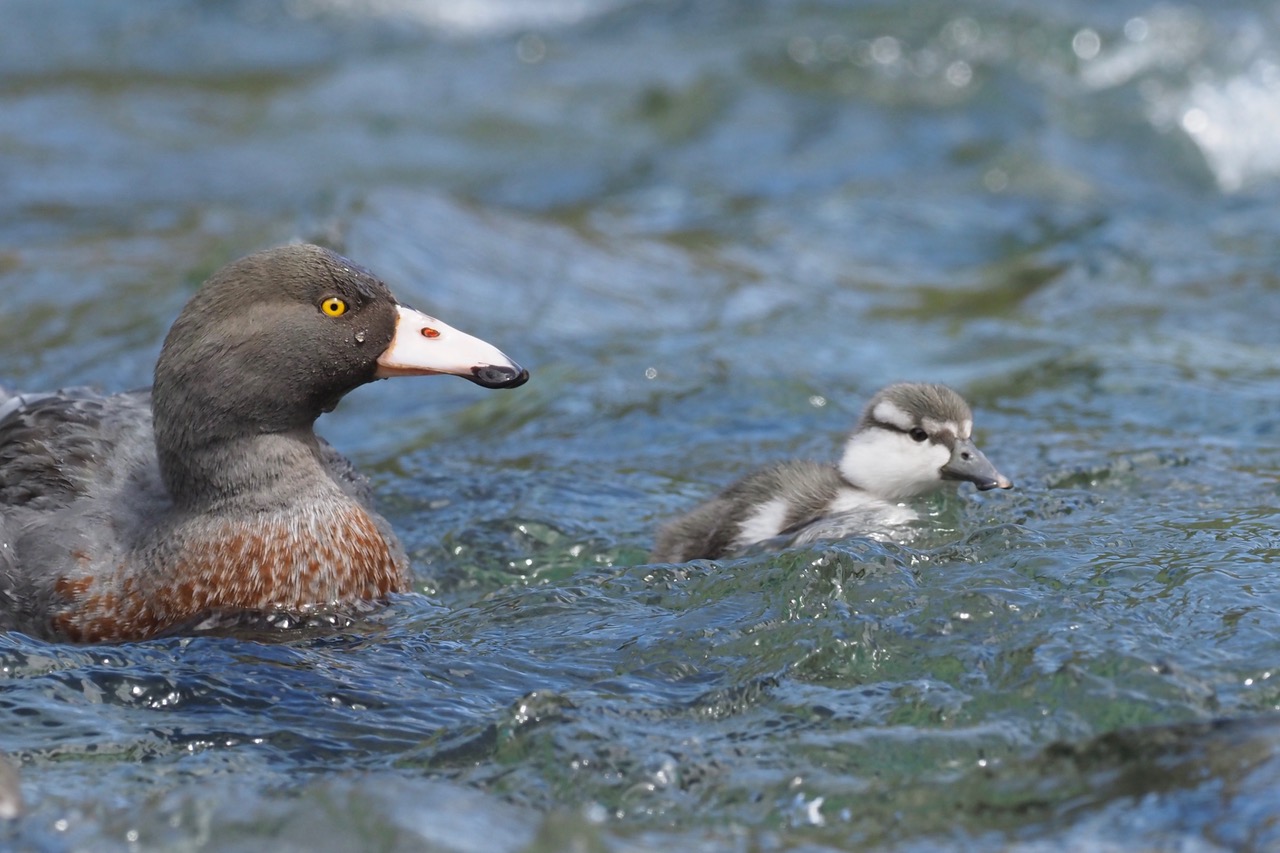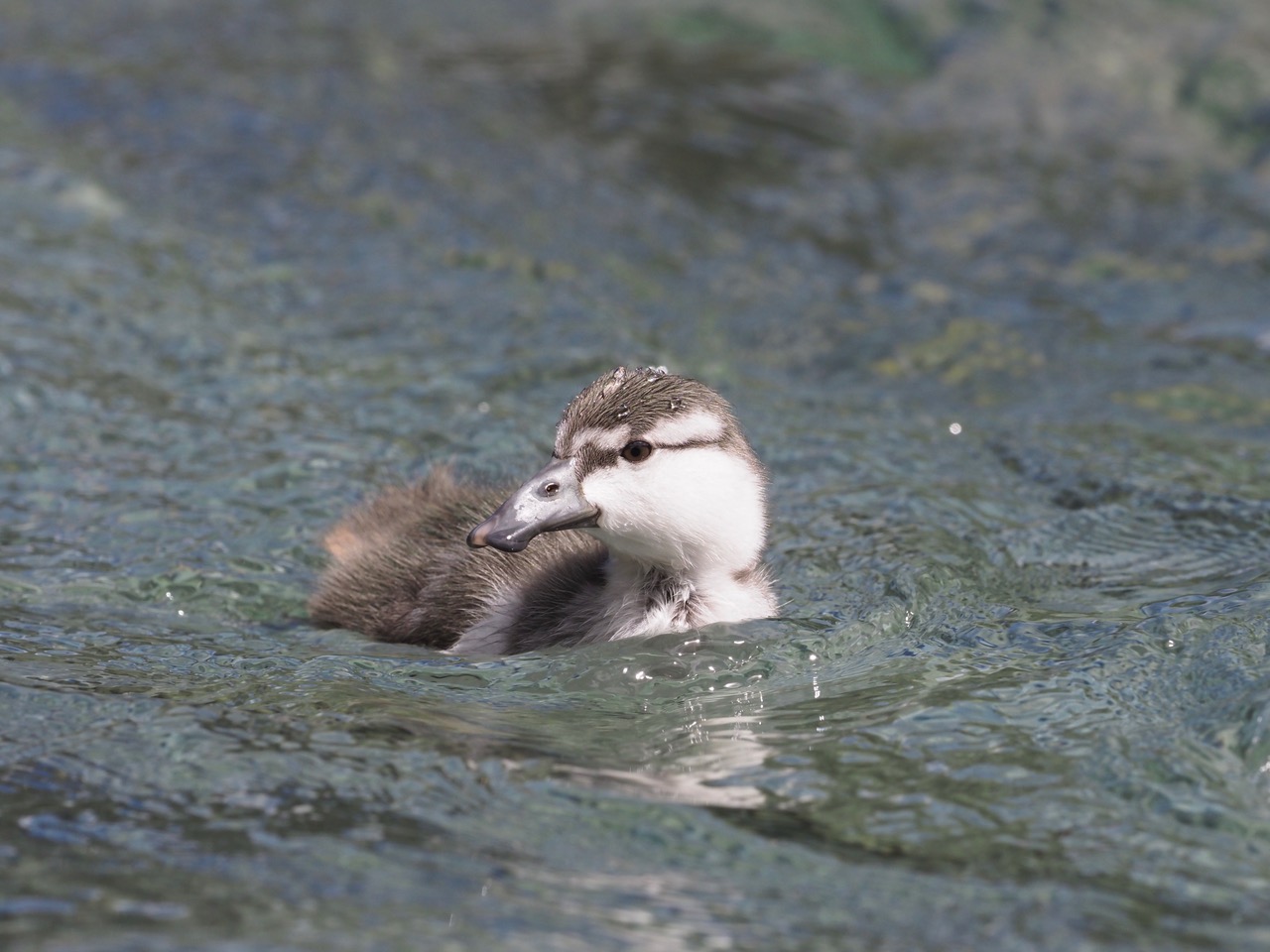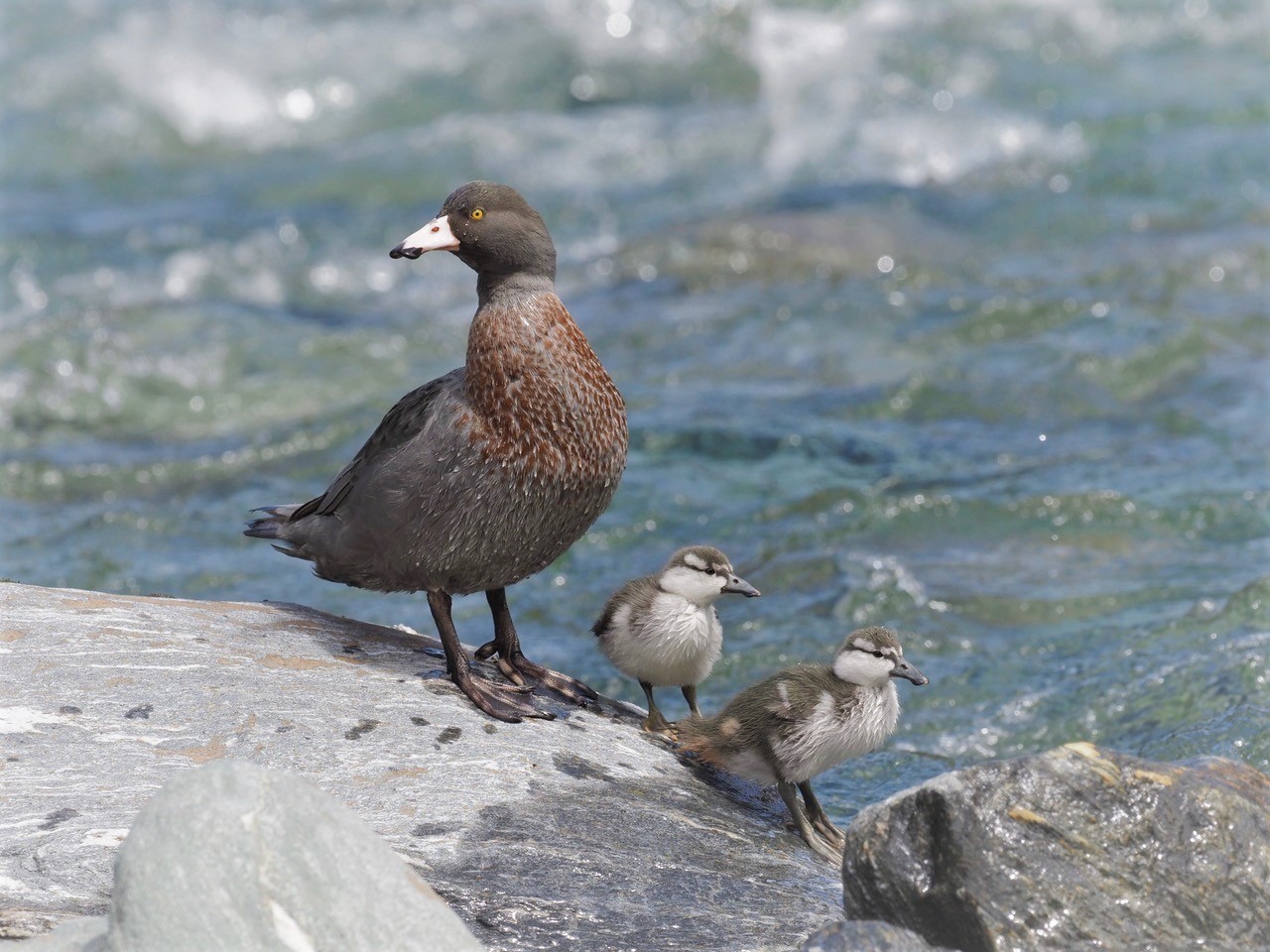Excited to report a memorable encounter with a whio family of three duckling’s, (two-three weeks old) with their magnificient parents. This is a promising sign for this ancient globally endangered taonga within the Makarora catchment.
The family were observed for a while as they continued dabbling amongst the rapids and jumping between rocks in the riverbed. Hopfully, the young whio will fledge within the next 10-12 weeks and establish their own territory nearby their natal grounds.

Whio primarily feed on aquatic invertebrates such as mayfly and caddisfly larvae and also take algae from stones and boulders. Their bill has a unique adaptation to facilitate feeding within the upper river environment. The upper bill has a semi-circular soft flap that helps protect the harder part of the bill from abrasion as the bird pries larvae from rocks in the river. The comb-like structures (lamellae) around the edge of the beak allow the whio to filter out aquatic insects and algae prey.

A new invasive mammalian trap-line has been installed to help protect whio, particuarly during the breeding season. This is essential in tandem with the Department of Conservation’s periodic pesticide application during beech mast events to help increase fledgling success and restore whio populations.

Whio are important indicator or Māori touchstone species of environmental condition, if they are present water quality is high as their food source (freshwater aquatic invertebrates) only exists under good conditions. This family really did appear healthy too!
“A day to remember, my first whio experience. Thank you!”
~ ABT Volunteer and whio photographer, Nick Beckwith

Thank you for visiting 🙂



